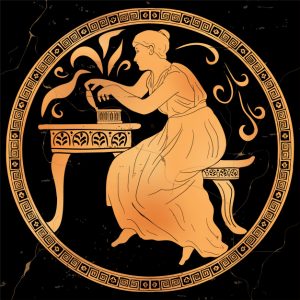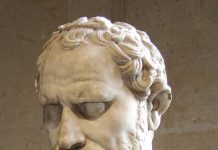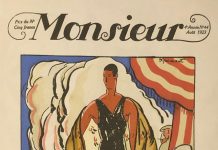Those who enjoy etymology will revel in this deeply insightful book on the ancient Greek poet Hesiod. By ancient, I mean really ancient. For those not familiar with Greek chronology, Hesiod (or whatever group of writers we now call Hesiod) lived between 750 and 650 BCE. To put that in context, Hesiod was roughly 350 years before Aristotle, about the time that separates us from the English Civil War. That already seems very long ago.
Together with Homer, Hesiod is a founder of Greek literature. Author Athanassios Vergados mentions Homer numerous times – the Index listing these instances covers a page and a half. Thus a good knowledge of The Iliad and The Odyssey are essential for an understanding of this book. A knowledge of ancient Greek would also help: even though the author translates most of the original texts, sometimes even first instances of a Greek word is only given in the original. Despite the hurdles, this book will repay close attention.
“Hesiod and the earliest mythographers treat cosmogony and theogeny in a genealogical fashion,” writes the author. Of the two most famous poems by Hesiod, one is actually titled Theogeny, “a long catalogue containing the names of gods (like Zeus, the Titans, etc), personifications of natural entities or phenomena (Day, Nights, Rivers, etc) and abstractions (such as ‘oath’ and ‘strife.’).” As a poem of roughly 1,000 lines, the Theogeny is therefore far from riveting, and as such is little known apart from early Greek experts. However, as Vergados shows, even though the mining operation is difficult, it does yield its fair share of bronze, silver and gold.
These are the three metals that have given their names to the Races of humans as understood by the Greeks. The original humans, the Golden Race, was a time when “men had in abundance everything they needed for their survival, hence there was no need for work. With the Silver Race we pass to the order of Zeus and the need to abide by justice. The third race (Bronze) was extremely violent” and yielded to the Race of Heroes (such as the ones immortalised by Homer). Finally we come to the Iron Race, the time in which Homer and Hesiod themselves lived. This conceptualisation of human origins permeates the work of Hesiod, and through its lens one can begin to appreciate the various elements of Theogeny and his other great poem, Works and Days.
The best known of the subjects treated by Hesiod is Pandora, infamous for Pandora’s Box, which has become a byword in modern English for something that should never be looked into lest it release untold misery or scandal (something like the tax returns of the former Dictator of the United States). In the author’s analysis, Hesiod’s explanation of Pandora’s name “can be rendered in four different ways, while the fact that Pandora was originally an epithet of the earth-goddess opens up further avenues of interpretation.”
Vergados relies heavily in this study on linking the name of a deity with the concept that pertains to that deity or collection of deities. In the case of the Muses, for example, “each of the Muses’ names in Hesiod reflects not the activity of the particular Muse who bears that name but rather an activity performed by all of them together.” This distinguishes the Muses in Hesiod from the Muses we encounter in Homer, where they are “presented as an undifferentiated group of nine nymphs.” In Hesiod, they “act both as a plurality and as individuals.”
When we come to the singular deity of Pandora, we encounter the complexity already mentioned, not the one-dimensional Pandora usually portrayed in other ancient texts which are more widely quoted today. Pandora is unique in Works and Days as the only name Hesiod ascribes an explicit etymology to. Unlike many names Hesiod invented ad hoc, Pandora is an appellation of the earth goddess; Vergados makes a particular point of examining a particular neck-amphora created near the end of the fifth century BCE, which depicts Pandora emerging from the ground on one side, and on the other side “we observe the head of a female figure emerging from what appears like a jar or a lump of clay.” (sadly, there is no photograph of the vase in this book). Vergados sees here “something more exciting than simply a reference to Pandora. The artist may in fact be comparing two conceptions of Pandora.” One of these is the earth goddess, which “is not the version we read in Hesiod. On the other hand, the artist shows an awareness of Hesiod’s version which recounted Pandora’s fabrication from clay and the subsequent affair of her jar.” Indeed, depicting Pandora on a jar was nothing less than an allusion to Pandora’s jar! Whether we think of it as a jar or box, the author reminds us of the little-known fact that once the ills of humanity had been released, one thing remained inside: Elpis, which is Hope.
There are many instances in the book where the author reveals micro-narratives embedded within names, something that actually “encapsulates a character’s history or destiny.” Some of the meanings Hesiod is giving us are contained in ‘kennings,’ which are “riddling expressions whose referent the audience must guess and whose parts may be in opposition to each other.” It is the great strength of this book that the author has been able to elucidate all these multifarious aspects Hesiod has strewn his poems with.
Even though this is a thoroughly scholarly book, Vergados helpfully employs metaphors to make his points clearly. For example, relating narrative structure to the musical tema con variazioni (theme and variations), he shows us that the Succession Myth of the Gods from Ouranus to Cronos to Zeus “functions as a template with which we are to interpret the entire backbone of the Theogeny.” Much more than a purely etymological study of Hesiod, the author offers us a template for understanding Hesiod’s works that will hopefully inspire Classicists to take a fresh look at them and teach them more often than they currently are.
There are typos on pages 137 (heights, not hights) and 141 (elsewhere, not elesewhere).
Athanassios Vergados received his PhD at the University of Virginia and is currently Reader in Greek at Newcastle University. He has held teaching and research posts at Franklin & Marshall College, the University of Tennessee at Knoxville, and the University of Heidelberg, where he also held a fellowship of the Alexander von Humboldt Foundation. He is the author of a commentary on the Homeric Hymn to Hermes (De Gruyter, 2013) as well as numerous articles on Greek poetry and other topics.
Hesiod’s Verbal Craft: Studies in Hesiod’s Conception of Language and its Ancient Reception.
Published by Oxford University Press, it is available for $105.














